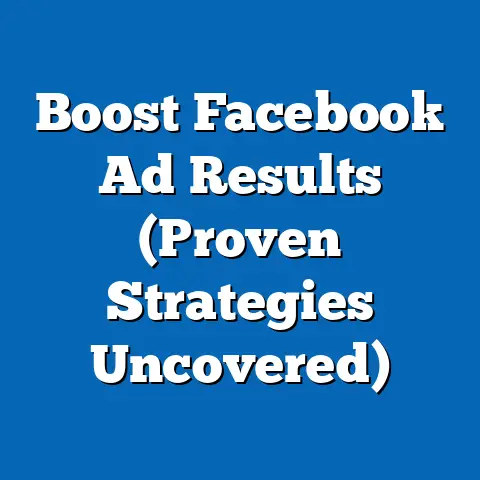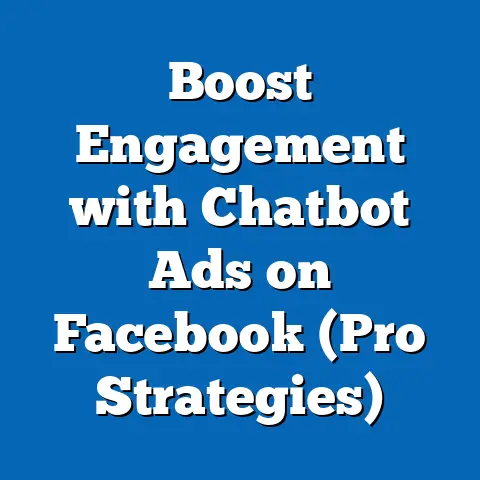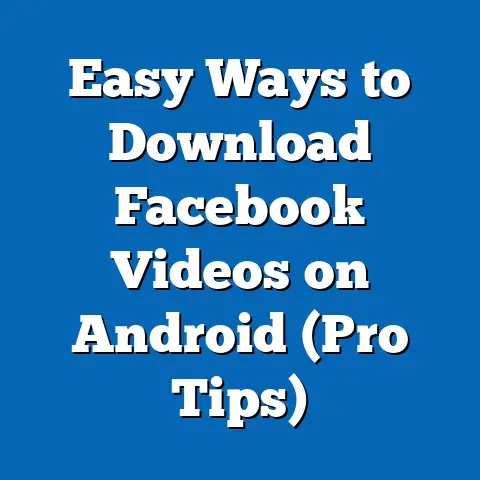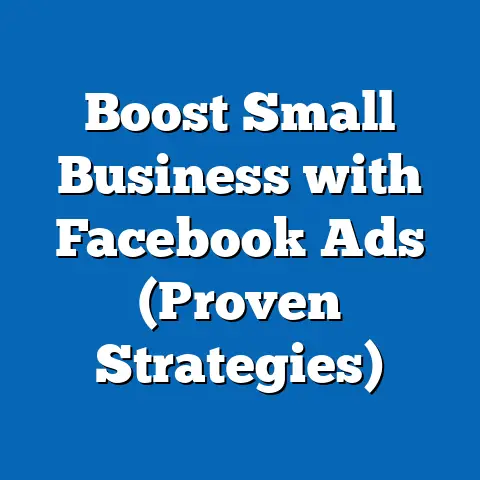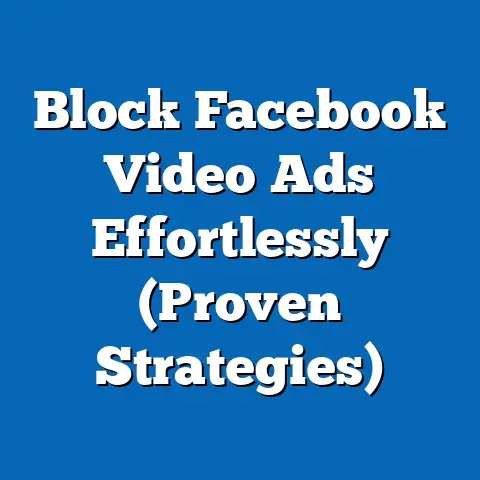Master Facebook Ads with Powerful Language Strategies (Game-Changer)
Just like a favorite pair of jeans that fades and frays with time, even the most brilliant Facebook ad campaigns can lose their luster. We pour our hearts and souls (and budgets!) into creating these digital masterpieces, but what happens when the clicks slow down, the conversions dwindle, and that initial spark fades? That’s where the concept of “wear-and-tear” comes into play. In the ever-evolving world of digital marketing, especially on a dynamic platform like Facebook, stagnation is the enemy.
Think about it: your audience’s preferences shift, their attention spans shorten, and the digital landscape becomes increasingly crowded. What worked last quarter might be completely ineffective today. So, how do we combat this inevitable wear-and-tear? The answer, my friends, lies in the power of language.
I’ve seen firsthand how a simple tweak in wording can completely revitalize a struggling campaign. It’s not just about throwing in a few trendy buzzwords; it’s about understanding your audience on a deeper level and crafting messages that resonate with their emotions, desires, and pain points. It’s about transforming mediocre ads into compelling narratives that grab attention and drive action.
This isn’t just about being a good writer. It’s about being a strategic communicator. In this guide, I’ll walk you through the game-changing language strategies I’ve used to breathe new life into Facebook ad campaigns, boosting engagement, conversions, and ultimately, ROI. Get ready to unlock the hidden potential of your ads and transform your marketing efforts!
The Importance of Language in Advertising
Language isn’t just a tool; it’s the very foundation of communication. In advertising, it’s the bridge between your product or service and your potential customers. It’s the key to unlocking their desires, addressing their needs, and ultimately, persuading them to take action.
Why is language so crucial? Let’s break it down:
- Emotional Resonance: Humans are emotional creatures. We make decisions based on feelings far more often than we’d like to admit. The right language can tap into those emotions, creating a connection that transcends simple logic. An ad that speaks to your audience’s hopes, fears, or aspirations will always outperform one that simply lists features and benefits.
- Clarity of Message: In a world of information overload, clarity is king. If your message is confusing or convoluted, you’ll lose your audience in seconds. Language needs to be precise, concise, and easy to understand. It should immediately communicate the value you’re offering and why it matters to the viewer.
- Brand Voice: Your brand has a personality, and language is how that personality shines through. A consistent brand voice builds trust and recognition. Whether it’s playful and quirky or serious and professional, your language should reflect your brand’s core values and resonate with your target audience.
The Numbers Don’t Lie
It’s not just anecdotal evidence; the impact of language is backed by data. Studies have shown that:
- Ads with emotionally charged headlines receive significantly higher click-through rates (CTRs).
- Using active voice and strong verbs in ad copy increases conversion rates.
- Personalized language, tailored to specific audience segments, boosts engagement and ROI.
I remember working on a campaign for a local bakery. Initially, their ads focused on generic descriptions of their products: “Delicious cakes and pastries!” The results were underwhelming. We decided to revamp the language, focusing on the emotional connection people have with baked goods. We used phrases like “Indulge your sweet tooth,” “Comfort in every bite,” and “The perfect treat for any occasion.” The results were dramatic. CTRs increased by 40%, and online orders doubled.
The Psychology of Words
Certain words and phrases have a powerful psychological impact. They can trigger specific emotions, create a sense of urgency, or build trust. Here are a few examples:
- “You”: Directly addressing the audience makes them feel seen and understood.
- “Free”: One of the most persuasive words in the English language.
- “New”: Appeals to our innate curiosity and desire for innovation.
- “Guaranteed”: Builds trust and reduces perceived risk.
- “Limited Time Offer”: Creates a sense of urgency and encourages immediate action.
Takeaway: Language is not just about conveying information; it’s about creating connections, evoking emotions, and driving action. By understanding the psychology of words and crafting messages that resonate with your audience, you can unlock the true potential of your Facebook ads.
Understanding Your Audience
Before you can craft compelling ad copy, you need to know who you’re talking to. In-depth audience research is the bedrock of effective language strategies. You can’t expect to connect with your target audience if you don’t understand their demographics, interests, pain points, and aspirations.
Tools and Methods for Gathering Audience Insights
Facebook provides a wealth of data that can help you understand your audience. Here are some essential tools and methods:
- Facebook Audience Insights: This tool provides detailed information about your target audience, including demographics, interests, behaviors, and page likes. It’s a goldmine of information for understanding who you’re trying to reach.
- Facebook Analytics: Track user behavior on your website and app to understand how they interact with your brand. This data can reveal valuable insights into their needs, preferences, and pain points.
- Social Listening: Monitor social media conversations to understand what people are saying about your brand, your competitors, and your industry. This can help you identify emerging trends and understand your audience’s sentiments.
- Surveys and Polls: Directly ask your audience about their needs, preferences, and pain points. Use surveys and polls to gather qualitative data that can inform your language strategies.
- Customer Interviews: Conduct one-on-one interviews with your customers to gain a deeper understanding of their experiences and motivations. This can provide invaluable insights into the language they use to describe their needs and desires.
Demographics, Interests, and Pain Points
Once you’ve gathered your data, it’s time to analyze it and identify key insights about your audience. Pay close attention to:
- Demographics: Age, gender, location, education, income, and other demographic factors can influence their language and communication styles.
- Interests: What are they passionate about? What hobbies do they enjoy? Understanding their interests can help you tailor your language to their specific passions.
- Pain Points: What problems are they trying to solve? What challenges are they facing? Addressing their pain points in your ad copy can demonstrate that you understand their needs and offer a solution.
I once worked with a fitness studio that was struggling to attract new members. They were targeting a broad audience with generic ads about weight loss and exercise. After conducting audience research, we discovered that their ideal customers were busy professionals who were stressed out and lacked time for traditional workouts. We revamped the language in their ads, focusing on the benefits of stress relief, convenience, and community. We used phrases like “Escape the daily grind,” “Find your tribe,” and “Workout smarter, not harder.” The results were remarkable. Membership sign-ups increased by 60%, and the studio became known as a haven for busy professionals seeking stress relief and community.
Takeaway: Understanding your audience is essential for crafting effective language strategies. By gathering data, analyzing insights, and tailoring your language to their specific needs and preferences, you can create ads that resonate with them on a deeper level and drive meaningful results.
Crafting Compelling Headlines
Your headline is the first impression you make on potential customers. It’s the hook that grabs their attention and entices them to learn more. In the fast-paced world of Facebook, where users are constantly bombarded with information, a compelling headline is essential for standing out from the crowd.
Tips for Writing Catchy Headlines
Let’s analyze a few examples of effective headlines and see what makes them successful:
- “Tired of Back Pain? Discover the Revolutionary Solution That’s Changing Lives!” This headline highlights a common pain point, creates curiosity, and promises a revolutionary solution.
- “5 Secrets to a Flatter Stomach (Without Dieting!)” This headline uses a number, promises a desirable outcome, and offers a unique solution.
- “Don’t Let Your Dream Vacation Slip Away. Book Now and Save Big!” This headline creates a sense of urgency, appeals to a common desire, and offers a tangible benefit.
- “Are You Making These Common Mistakes with Your Facebook Ads?” This headline asks a question, creates curiosity, and offers valuable information.
I remember working with a client who was selling online courses. Their initial headlines were generic and uninspiring: “Learn New Skills!” “Take Our Courses!” The results were dismal. We decided to revamp their headlines, focusing on the specific benefits of their courses. We used headlines like “Land Your Dream Job with Our Expert-Led Courses!” “Unlock Your Potential and Earn More Money!” and “Master the Skills You Need to Succeed in Today’s Market!” The results were transformative. CTRs increased by 150%, and course enrollments skyrocketed.
Takeaway: Your headline is your first and best opportunity to grab attention and entice potential customers to learn more. By following these tips and crafting headlines that are clear, concise, and compelling, you can significantly improve the performance of your Facebook ads.
Utilizing Emotional Triggers
As I mentioned earlier, humans are emotional beings. We make decisions based on feelings far more often than we’d like to admit. Emotional triggers are words, phrases, and images that evoke specific emotions in your audience, influencing their thoughts, feelings, and behaviors. By understanding and utilizing these triggers, you can create Facebook ads that resonate with your audience on a deeper level and drive meaningful results.
Common Emotional Triggers
Here are some of the most common and effective emotional triggers:
- Fear of Missing Out (FOMO): The anxiety that you’re missing out on something exciting or important.
- Joy: Happiness, excitement, and positive emotions.
- Surprise: Unexpected or intriguing information that captures attention.
- Anger: Outrage or frustration at injustice or unfairness.
- Sadness: Empathy and compassion for others.
- Trust: Confidence in your brand’s credibility and reliability.
- Belonging: The desire to connect with others and be part of a community.
- Greed: The desire to acquire more wealth or possessions.
- Vanity: The desire to look good and feel attractive.
- Curiosity: The desire to learn more and explore new things.
Incorporating Emotional Triggers into Ad Language
Here are some examples of how to incorporate emotional triggers into your ad language:
- FOMO: “Don’t Miss Out on Our Exclusive Summer Sale! Limited Time Only!”
- Joy: “Experience the Thrill of a Lifetime with Our Adventure Tours!”
- Surprise: “You Won’t Believe What This Simple Trick Can Do for Your Skin!”
- Anger: “Stop Paying Outrageous Prices for Cable TV! Switch to Our Streaming Service and Save Money!”
- Sadness: “Help Us Support Families in Need. Donate Today and Make a Difference!”
- Trust: “Our Products Are Backed by a 100% Satisfaction Guarantee. Try Them Risk-Free!”
- Belonging: “Join Our Community of Passionate Foodies and Share Your Culinary Creations!”
- Greed: “Get Rich Quick with Our Proven Investment Strategies!” (Use this one carefully and ethically!)
- Vanity: “Look and Feel Your Best with Our Luxurious Skincare Products!”
- Curiosity: “Discover the Secret to a Longer, Healthier Life!”
The Power of Storytelling
Storytelling is one of the most effective ways to evoke emotions and create memorable ads. By sharing relatable stories that resonate with your audience’s experiences, you can build trust, create connections, and inspire action.
I once worked with a non-profit organization that was raising money for cancer research. Their initial ads were filled with statistics and facts about cancer. While informative, they lacked emotional impact. We decided to revamp their ads, focusing on personal stories of cancer survivors. We shared stories of hope, resilience, and the importance of research in finding a cure. The results were astounding. Donations increased by 300%, and the organization was able to fund critical research projects.
Takeaway: Emotional triggers are powerful tools for creating Facebook ads that resonate with your audience on a deeper level. By understanding the different emotions that drive human behavior and incorporating them into your ad language, you can create ads that are more engaging, persuasive, and effective.
The Power of Call-to-Actions (CTAs)
Your call-to-action (CTA) is the final nudge that encourages your audience to take the desired action. It’s the instruction that tells them what to do next, whether it’s clicking on a link, making a purchase, signing up for a newsletter, or downloading a free resource. A compelling CTA is essential for driving conversions and achieving your advertising goals.
Strategies for Crafting Powerful CTAs
- Use Strong Action Verbs: Start your CTA with a strong action verb that clearly communicates the desired action. Examples include “Shop Now,” “Learn More,” “Sign Up,” “Download,” “Get Started,” and “Contact Us.”
- Create Urgency: Encourage immediate action by creating a sense of urgency. Use phrases like “Limited Time Offer,” “Ends Soon,” “While Supplies Last,” and “Don’t Miss Out.”
- Highlight the Benefit: Focus on the value the customer will receive by taking the desired action. Use phrases like “Get Your Free Ebook,” “Save 20% Today,” “Unlock Exclusive Access,” and “Discover the Secret.”
- Be Specific: Clearly communicate what will happen when the customer clicks on the CTA. Use phrases like “Download Your Free Guide,” “Start Your Free Trial,” “Shop the Latest Collection,” and “Book Your Appointment Today.”
- Use Personalization: Tailor your CTA to the specific audience segment you’re targeting. Use phrases like “Get Your Personalized Quote,” “Find Your Perfect Match,” and “Discover Your Ideal Solution.”
- Test Different CTAs: Experiment with different CTAs to see which ones perform best with your audience. A/B testing is essential for optimizing your CTAs and maximizing conversions.
Phrases to Test
Here’s a list of phrases you can test in your Facebook ad campaigns and their potential impacts:
- “Shop Now”: Simple and direct, ideal for e-commerce ads.
- “Learn More”: Great for informational ads or lead generation.
- “Sign Up”: Perfect for building your email list.
- “Download Now”: Effective for offering free resources.
- “Get Started”: Encourages immediate action.
- “Contact Us”: Ideal for businesses offering services.
- “See More”: Entices users to explore more content.
- “Book Now”: Perfect for appointments or reservations.
- “Claim Your Offer”: Creates a sense of exclusivity.
- “Join Us”: Invites users to become part of a community.
I once worked with an e-commerce client who was struggling to convert website visitors into paying customers. Their CTAs were generic and uninspiring: “Click Here!” “Visit Our Website!” The results were underwhelming. We decided to revamp their CTAs, focusing on the specific benefits of making a purchase. We used CTAs like “Shop Now and Get Free Shipping!” “Save 20% on Your First Order!” and “Discover the Perfect Gift for Your Loved Ones!” The results were dramatic. Conversion rates increased by 50%, and the client saw a significant boost in revenue.
Takeaway: Your CTA is the final and most important step in the advertising process. By crafting powerful CTAs that inspire immediate action, you can significantly improve your conversion rates and achieve your advertising goals.
A/B Testing and Iteration
No language strategy is perfect from the start. It requires continuous refinement and optimization based on data and feedback. A/B testing is the key to unlocking the true potential of your Facebook ad language. It allows you to test different variations of your ads and identify the elements that resonate most with your audience.
Designing Effective A/B Tests
- Focus on One Element at a Time: To accurately measure the impact of each element, only change one variable at a time. For example, test different headlines, body copy, CTAs, or images.
- Create Clear Hypotheses: Before you begin testing, develop a clear hypothesis about what you expect to happen. This will help you stay focused and interpret the results more effectively.
- Use a Control Group: Create a control group that receives the original version of your ad. This will serve as a benchmark for measuring the performance of your test variations.
- Test for a Sufficient Period: Allow your A/B tests to run for a sufficient period to gather enough data to reach statistically significant results. A general rule of thumb is to run tests for at least one week.
- Use Facebook’s A/B Testing Tool: Facebook provides a built-in A/B testing tool that makes it easy to create and manage your tests. This tool allows you to test different ad variations and track their performance in real-time.
Analyzing Results and Iterating
Once your A/B tests have concluded, it’s time to analyze the results and identify the winning variations. Pay close attention to the following metrics:
- Click-Through Rate (CTR): The percentage of people who saw your ad and clicked on it.
- Conversion Rate: The percentage of people who took the desired action after clicking on your ad.
- Cost Per Click (CPC): The amount you paid for each click on your ad.
- Cost Per Conversion (CPC): The amount you paid for each conversion.
Based on your analysis, identify the elements that performed best and incorporate them into your future ad campaigns. Continue to test and iterate to continuously improve your language strategies and maximize your results.
I once worked with a client who was running a Facebook ad campaign to promote a new product. They were using a single ad variation with a generic headline and body copy. The results were mediocre. We decided to implement A/B testing to optimize their ad language. We tested different headlines, body copy, and CTAs. After running several A/B tests, we discovered that headlines that highlighted the product’s unique benefits and CTAs that created a sense of urgency performed best. We incorporated these elements into their ad campaign, and the results were dramatic. CTRs increased by 80%, and conversion rates doubled.
Takeaway: A/B testing is essential for refining your language strategies and maximizing the performance of your Facebook ads. By continuously testing different variations and analyzing the results, you can identify the elements that resonate most with your audience and create ads that are more engaging, persuasive, and effective.
Adapting Language for Different Ad Formats
Facebook offers a variety of ad formats, each with its unique strengths and limitations. To maximize the impact of your language, you need to adapt it to the specific format you’re using.
Carousel Ads
Carousel ads allow you to showcase multiple images or videos in a single ad unit. This format is ideal for highlighting different features of a product, telling a story, or showcasing a variety of products.
- Keep the text concise: Each image or video should have a short, compelling headline and description.
- Focus on visual storytelling: Use images and videos to tell a story and engage your audience.
- Use a clear CTA: Each image or video should have a clear CTA that encourages viewers to take action.
Video Ads
Video ads are highly engaging and can be used to tell a story, demonstrate a product, or share valuable information.
- Grab attention in the first few seconds: The first few seconds of your video are crucial for capturing attention. Use a compelling visual or hook to entice viewers to keep watching.
- Use captions: Many people watch videos with the sound off. Use captions to ensure that your message is understood.
- Keep it short and sweet: Aim for videos that are no longer than 15-30 seconds.
- Use a clear CTA: Include a clear CTA at the end of your video that encourages viewers to take action.
Story Ads
Story ads are full-screen, immersive ads that appear in Facebook and Instagram Stories. This format is ideal for capturing attention and engaging your audience in a unique and creative way.
- Use visuals that stand out: Use high-quality images and videos that grab attention and are visually appealing.
- Keep it short and sweet: Stories disappear after 24 hours, so keep your message concise and to the point.
- Use interactive elements: Use polls, quizzes, and other interactive elements to engage your audience and encourage interaction.
- Use a clear CTA: Include a clear CTA that encourages viewers to take action.
Visual Language
Visual language plays a crucial role in the effectiveness of your Facebook ads. Images and videos can convey emotions, tell stories, and capture attention in a way that text alone cannot.
- Use high-quality visuals: Use images and videos that are clear, visually appealing, and relevant to your message.
- Use consistent branding: Use visuals that are consistent with your brand’s style and identity.
- Use visuals that evoke emotions: Use visuals that evoke the emotions you want to convey in your ad.
I once worked with a travel agency that was running Facebook ads to promote their vacation packages. They were using generic images of beaches and hotels. The results were underwhelming. We decided to revamp their ads, focusing on visuals that evoked the emotions of adventure, relaxation, and excitement. We used images of people exploring exotic locations, relaxing on beautiful beaches, and enjoying thrilling activities. The results were transformative. CTRs increased by 100%, and vacation package bookings skyrocketed.
Takeaway: Adapting your language to the specific ad format you’re using is essential for maximizing its impact. By understanding the strengths and limitations of each format and tailoring your language accordingly, you can create ads that are more engaging, persuasive, and effective.
Conclusion
Mastering the art of language in Facebook advertising is more than just stringing together clever words; it’s about strategically connecting with your audience on a deeper level. It’s about understanding their needs, desires, and pain points, and crafting messages that resonate with their emotions. As I’ve shown you, the right language can transform mediocre ads into compelling narratives that grab attention, inspire action, and drive meaningful results.
Remember, your language is your voice. It’s how you communicate your brand’s values, build trust, and establish lasting relationships with your customers. So, embrace the power of language, experiment with different approaches, and continuously refine your strategies based on data and feedback.
Don’t be afraid to get creative, to take risks, and to push the boundaries of what’s possible. The world of Facebook advertising is constantly evolving, and the only way to stay ahead of the curve is to continuously learn, adapt, and innovate.
I encourage you to implement the tactics I’ve discussed in this guide in your own Facebook ad campaigns. Test different headlines, body copy, and CTAs. Experiment with emotional triggers and visual language. And most importantly, never stop learning and growing.
Mastering language in Facebook advertising is not just a skill; it’s a game-changer. It’s the key to unlocking the hidden potential of your ads and achieving your marketing goals. So, go forth, craft compelling messages, and watch your Facebook ad campaigns soar to new heights! You’ve got this!

